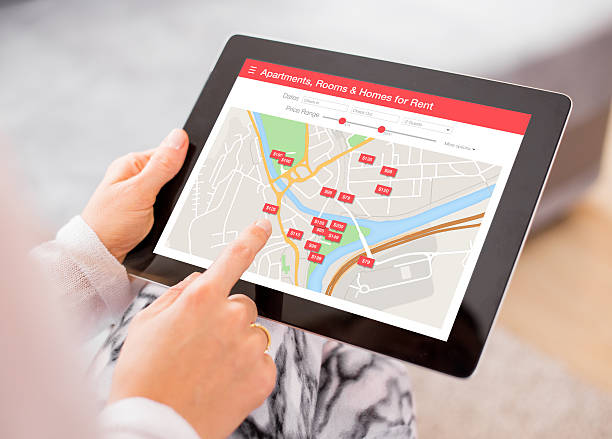The commercial real estate market in 2025 feels like a mix of opportunity and uncertainty.
Some investors are eager to jump in, hunting for undervalued buildings that “just need a little work.” Others are pulling back, worried that rising costs and higher interest rates might turn a promising deal into a financial drain.
But here’s the truth: not every “value-add” commercial property is worth the risk. Some buildings are goldmines in disguise. Others are money pits that look good only on paper.
At JDJ Consulting Group, we’ve seen both stories unfold. And the difference often comes down to what happens before the deal closes.
The Allure of the “Fixer” Commercial Property
Old commercial buildings have a certain charm. They’re cheaper than new constructions, often located in prime areas, and come with existing tenants. For an investor, that sounds like a shortcut to quick returns.
A property listed at $780,000 that’s already generating rent might look appealing. Six tenants, steady income, a few repairs needed — how bad could it be?
The answer: sometimes worse than it looks. Because what’s visible isn’t always what costs you the most.
The Hidden Costs Beneath the Price Tag
When you see a building that “just needs a roof” or “some upgrades,” pause right there. Those words hide layers of cost, logistics, and risk.
Here’s what usually lies beneath the surface:
-
Deferred maintenance that adds up faster than expected.
-
Aging HVAC systems that still work — until they don’t.
-
Outdated electrical or plumbing lines that fail inspection.
-
Single utility meters that make it impossible to split costs among tenants.
A roof replacement on a mid-size commercial building in Los Angeles, for instance, can cost between $250,000 and $350,000. Add HVAC upgrades, electrical rewiring, and energy compliance requirements — your $780,000 deal suddenly looks like a $1 million commitment.
And that’s before you even talk about financing.
The Price Isn’t the Problem — It’s the Math Behind It
Too many first-time investors focus on the listing price and rent roll without digging into the math that actually matters.
Let’s simplify it. If a property earns $75,000 a year in rent but has $30,000 in visible expenses, that sounds like $45,000 in profit. But when you include:
-
Maintenance and repairs
-
Capital expenditures
-
Vacancy losses
-
Management fees
-
Administrative costs
Your actual profit could be half of what you expect.
The rule of thumb:
About 50% of your gross income will go out the door in expenses. If the property is old, it’s often more than that.
When your loan interest rate is higher than your return — what’s called negative leverage — you’re losing money even while collecting rent.
That’s why proper financial modeling is crucial before signing anything. At JDJ Consulting Group, we stress-test every deal to reveal what the real return will look like after the first year’s surprises.
Rents Are Low for a Reason
If the property’s tenants are paying below-market rents, that’s not always a hidden opportunity. It can also be a red flag.
Here’s why:
Tenants who’ve been in place for years paying low rents often stay because they can’t afford more. The moment you raise rent to “market levels,” you risk vacancies, disputes, and costly turnovers.
And when tenants move out, the story doesn’t end there. You’ll need to:
-
Renovate the vacated space.
-
Market the unit.
-
Offer tenant improvements to attract new occupants.
-
Cover property taxes and utilities during downtime.
Suddenly, the “simple rent increase” becomes a six-month turnaround project with unexpected costs.
Gross Leases vs. Net Leases: Why It Matters
Many older buildings operate under gross leases — meaning the landlord pays for taxes, utilities, and maintenance. That’s convenient for tenants, but not for owners.
The smarter model for long-term stability is a net lease, where tenants cover a portion of shared costs like utilities, insurance, and property upkeep.
If your building has one shared meter, you can still move toward net terms by allocating expenses based on each tenant’s square footage. This not only improves your cash flow but also reduces friction over rising utility bills.
However, switching to new lease structures takes planning — and clear documentation. JDJ Consulting Group helps landlords design these transitions carefully to protect relationships and comply with California’s commercial lease laws.
Why You Need a True Acquisition Cost Model
When we help clients assess an investment property, we never stop at the asking price. Instead, we build what we call a true acquisition cost model — a detailed breakdown of what the property will really cost in its first few years.
That includes:
-
Purchase price
-
Inspection and due diligence costs
-
Renovation and upgrade expenses
-
Utility separation or efficiency improvements
-
Potential tax reassessments
-
Insurance and code compliance updates
This full-cost picture often changes the decision.
A property that seems like a steal at first glance can turn into a break-even deal after expenses. And sometimes, walking away is the smartest investment move you can make.
The Risk of Underestimating Maintenance
Ask any long-term landlord: maintenance is where most budgets fall apart. Old systems break at the worst possible times — and when they do, you can’t delay the fix.
The most common surprise expenses:
-
Roof leaks that damage interior ceilings and tenant spaces
-
HVAC failures during hot Los Angeles summers
-
Electrical faults that trigger safety inspections
-
Plumbing issues in mixed-use buildings
You also can’t ignore smaller ongoing costs: landscaping, snow removal (if applicable), pest control, or property cleaning. The danger isn’t one big repair. It’s the accumulation of small ones that drain profit over time.
That’s why we recommend budgeting 10–15% of your gross income annually for maintenance reserves, especially for older assets.
Due Diligence Isn’t Optional — It’s the Dealbreaker
Every investor knows to get an inspection. But too many stop there.
A real due diligence process goes deeper — it verifies not just the building’s condition but its financial truth.
Before closing, you should:
-
Review three years of operating expenses and utility bills.
-
Collect estoppel certificates from all tenants confirming their lease terms.
-
Verify security deposits and any outstanding obligations.
-
Estimate property tax reassessment based on the new purchase price.
-
Check zoning compliance and building permits for past improvements.
Skipping any of these steps can turn your first year of ownership into a string of surprises.
At JDJ Consulting Group, our due diligence coordination ensures clients get a full, accurate picture before they commit. You don’t want to buy someone else’s problem disguised as potential.
How Market Research Saves You From Overpaying
It’s surprising how many investors buy commercial property without comparing it to similar assets in the area. Before you even submit an offer, check what’s happening in the local market.
Ask questions like:
-
What are current market rents for similar units?
-
What’s the average vacancy rate in that area?
-
Have property taxes or insurance costs risen recently?
-
What kind of demand exists for that type of space?
If local rents are stagnant or trending downward, your plan to raise them may not hold up. And if insurance premiums in that neighborhood have doubled, your pro forma numbers will crumble fast.
This kind of market research is something JDJ Consulting Group performs routinely for clients. It’s not just about what the property is worth today — it’s about how it will perform tomorrow.
The Emotional Trap: Buying Potential Instead of Profit
It’s easy to get emotionally attached to a property’s potential. You start imagining how the building will look after upgrades, how rents will rise, and how it might appreciate over time.
But emotion doesn’t pay the mortgage. Numbers do.
Every commercial investor should ask two questions before buying:
-
Can this property cover itself financially from day one?
-
If the market stalls, can I afford to hold it long-term?
If you can’t confidently answer yes to both, the property may not be worth the risk.
Real estate success isn’t just about finding the right property — it’s about timing, leverage, and management discipline. And sometimes, walking away is the most profitable decision of all.
The JDJ Way: Smarter, Safer Investments
At JDJ Consulting Group, we’ve helped clients avoid costly mistakes by uncovering what others overlook.
Our process blends financial modeling, zoning expertise, and operational insight — helping investors see the complete picture before they sign the dotted line.
When analyzing a building that “needs work,” we look at three big questions:
-
Can it generate sustainable income after improvements?
-
Do repair costs justify the long-term return?
-
Will zoning, permits, or compliance slow redevelopment?
This comprehensive view separates a risky buy from a strategic investment.
Final Thoughts: Don’t Buy Problems, Buy Opportunity
Buying a commercial property that needs work isn’t a bad idea. In fact, some of the best-performing assets in Los Angeles started as neglected buildings with vision behind them.
But here’s the difference: Successful investors didn’t guess — they planned. They knew their numbers, their market, and their limits.
As Jake Heller, CEO of JDJ Consulting Group, often says:
“You’re not just buying a building. You’re buying every decision the last owner made — and every problem they ignored.”
So before you rush into a deal, slow down. Run the math. Check the permits. Review the leases.
And if you’re not sure what’s missing, talk to a consulting expert who does this every day. Because in commercial real estate, it’s not the first year that makes or breaks you — it’s what you didn’t see coming.
Need Help Evaluating a Commercial Property?
JDJ Consulting Group helps investors and developers across Los Angeles make data-driven real estate decisions. From feasibility studies and financial projections to zoning reviews and permit expediting, we guide you from first look to final close.
Schedule a free consultation today and learn how to turn a risky purchase into a profitable strategy.
Article Post: Reddit Post






